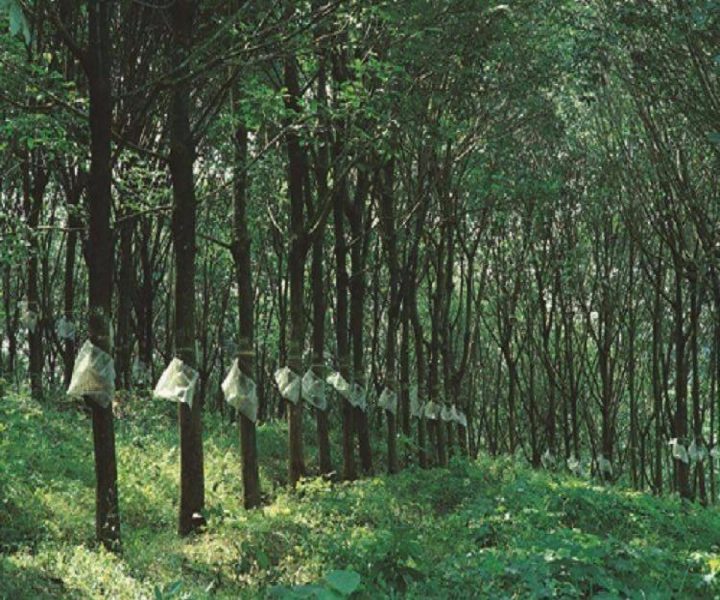
When Kerala rubber farmers & workers were crushed by tyre companies
For many rubber plantation farmers and workers, the Competition Commission of India’s 2018 order may have come as an eye-opener.

Raju P Naidu, whose grandparents migrated from Tamil Nadu’s Tirunelveli decades ago, used to work in a rubber plantation in Aryankavu panchayat in Kerala’s Kollam for 20 years. Over the last few years, thousands of labourers like him lost their jobs due to the decline in rubber prices.
It was a big hit for Kerala, which is the largest producer of rubber in India, having 75% share of the total produce. Raju turned to construction work.
“As small and medium rubber plantations faced closure, many workers migrated to other occupations and places,” says Raju, who took up construction work to sustain his family.
“There were around 1,000 workers in that estate. All lost employment and majority of them migrated back to Tamil Nadu,” says Raju, now a local committee secretary of CPIM.
The crisis even impacted the demography and economy of many villages in the southern districts. For instance, Aryankavu panchayat in Kollam witnessed a drastic decline in population from about 16,000 in 2010 to 7,000 now.
CCI findings
For many rubber plantation farmers and workers, the Competition Commission of India’s 2018 order may have come as an eye-opener.
The tribunal found that five big tyre manufacturers, which are the major buyers of rubber, had colluded to keep tyre prices high over the last decade and a half in order to make huge profits even as rubber farmers reeled in losses and thousands of workers lost their jobs.
In an order passed on August 31, 2018, CCI imposed a penalty of ₹1,788 crore on five tyre companies, Apollo Tyres, MRF, JK Tyres, CEAT and Birla Tyres.
MRF had to pay the highest amount of ₹622.09 cr, followed by Apollo Tyres’ ₹425.53 cr, CEAT’s ₹252.16 cr, JK Tyres’ ₹309.95 cr and Birla Tyres’ ₹178.33 cr.
Besides the tyre companies, the association of tyre manufactures, Automotive of Tyre Manufactures Association (ATMA) was penalised ₹8.4 lakh for conniving with the companies.
The Commission found that the tyre manufactures had exchanged price-sensitive data amongst them through ATMA, and had taken collective decision on the prices of tyres. ATMA collected and compiled information relating to company-wise and segment-wise data (both monthly and cumulative) on production, domestic sales and export of tyres on a real time basis. The sharing of such sensitive information made coordination easier amongst the tyre manufacturers.
Accordingly, the Commission held the five tyre manufacturers and ATMA guilty of contravention of the provisions of Section 3 of the Act, which prohibits anti-competitive agreements including cartels, during 2011-2012.
The companies got the Madras High Court to stay the CCI order then, but the court on January 6, 2022, upheld the CCI order. The aggrieved tyre companies filed a special leave petition before the Supreme Court which too dismissed the case on January 28, 2022.
With this, the five major tyre companies have no option but pay the penalty.
Rise and fall of rubber
The CCI report states that the price of natural rubber increased from ₹78/kg to ₹114/kg in 2005. Tyre prices were raised by 12-15% then. However, when the prices of rubber went down to ₹82/kg, the subsequent rollback in tyre prices was only to the tune of 3-4%.
Again in 2008, when rubber prices went up from ₹75/kg to ₹142/kg and crude oil prices also shot up from $65/barrel to $140/barrel, prices increased across all categories of tyres by 17-22%.
However, when in December 2008/January 2009, natural rubber prices dropped to ₹69/kg, and excise duty on tyres was also slashed, tyre prices were not rolled back. Also in 2011-12, when rubber prices shot up to ₹240/kg, tyre prices were hiked by 18-25%, but when rubber prices dropped to ₹145/kg in 2013-14, there was no corresponding drop in tyre prices.
“Not only that the benefit of the fall in rubber price didn’t transfer to the consumers, but the farmers and workers suffered heavy loss,” said Jayamohan, a member of the Kerala Plantation Labour Committee, adding that this forced many medium and small plantations to shift to other crops.
“This act of cheating by the tyre companies also caused financial loss to the government. Kerala government has been providing support price to farmers to maintain the price of the rubber at ₹170. Even this price was not lucrative for farmers because the production cost of rubber is ₹180 per kilo,” Jayamohan, also an office-bearer of CITU for the plantation workers explained to The Federal.
According to the Economic Review of 2020, rubber was the second largest crop in Kerala occupying 21% of the total area of cultivation after coconut which occupies 29%. Even rice comes only third with regard to the area of cultivation (7%). It is estimated that around 20 lakh people depend on rubber farming and industry in the state. Kerala occupies a prominent place in world map of rubber industry as India holds the third place in terms of production.
Compensation for farmers, workers
“Considering the importance of rubber cultivation in Kerala, the Union Government should announce a compensation package in the light of CCI’s findings,” says Jayamohan.
He also expressed the view that the government should bring a mechanism to fix and regulate the price of rubber as well as rubber products instead of leaving it to the “greed of private players”.
Kerala’s rubber plantations lie across the state, from north to south, but the large and major plantations are concentrated in the central and southern districts of Kottayam, Pathanamthitta and Kollam.

